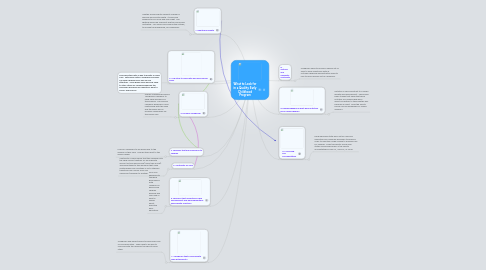What to Look for in a Quality Early Childhood Program
by Rondell Bennett

1. The child staff ratio is key to quality in child care. With small ratios, childcare providers can give children more one on one attention. Small group sizes and low child to staff ratios are recommended by the American Academy of Pediatrics, Zero to Three, and NAEYC.
2. 5. Continuity of Care
2.1. Continuity of care means that the caregiver and the child remain together for an indefinite amount of time during care (more than a year). The advantages to this would be that close relationships form and their is not a stressful transition from moves from one classroom/caregiver to another.
3. 6. Teachers that understand Child Development and Developmentally Appropriate Practices
3.1. DAP is an approach to teaching grounded in both research on how young children develop and learn and in what is known about effective early education.
4. 7. Caregivers that communicate well with parents
4.1. Caregivers and parents need to have open lines of communication. They need to be able to communicate the needs of the child to each other.
5. 4. Teachers that are responsive to children
5.1. Look for caregivers to be responsive to the children in their care. How do they react to the child's needs?
6. 3. Primary Caregiving
6.1. Primary Caregiving involves assigning a caregiver to each child and family in the program. The primary caregiver develops a close relationship with the child and the family and is primarily responsible for the child's care.
7. 2. Low staff to child ratio and small group sizes.
8. 1. Health and Safety
8.1. Healthy environments supports children's physical and mental health. It should be pleasing to your nose and your sight. The lighting should be sufficient and the rooms well ventilated. You should look around the outside, to include the playground, for cleanliness.
9. 8. Cultural and Linguistic continuity
9.1. Caregivers need to posses a special set of skills to work effectively with all cultures.Childcare administrators need to look to hire a diverse set of caregivers.
10. 9. Knowledgeable in what good nutrition is for young children
10.1. Nutrition is very important to a child's growth and development. There have been studies that show that good nutrition as a young child has a direct correlation to their healthy well being as an adult. Does the facility follow CACFP guildelines for young children?
11. 10. Licensing and Accrediatation
11.1. Each individual state has a set of rules and regulations for childcare providers to follow in order to maintain a legal license to provide care for children. Does this facility follow your states licensing policies? Is the facility accreditated by NAEYC, NAFCC, or NAA?


